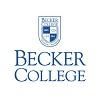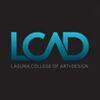
What are the top ranked game design schools for 2019?
| Ranking | School | % of Schools Considered |
|---|---|---|
| 1 | University of Southern California | Top 1% |
| 2 | Carnegie Mellon University | Top 2% |
| 3 | University of Utah | Top 3% |
| 4 | New York University | Top 3% |
| 5 | Rochester Institute of Technology | Top 4% |
| 6 | DigiPen Institute of Technology | Top 5% |
| 7 | University of California, Santa Cruz | Top 5% |
| 8 | University of Central Florida + FIA | Top 6% |
| 9 | Massachusetts Institute of Technology | Top 7% |
| 10 | Southern Methodist University | Top 7% |
| 11 | University of California, Irvine | Top 8% |
| 12 | DePaul University | Top 9% |
| 13 | Rensselaer Polytechnic Institute | Top 10% |
| 14 | Georgia Institute of Technology | Top 10% |
| 15 | Savannah College of Art and Design | Top 15% |
| 16 | Michigan State University | Top 15% |
| 17 | University of Washington | Top 15% |
| 18 | Drexel University | Top 15% |
| 19 | University of California, Los Angeles | Top 15% |
| 20 | University of Texas at Dallas | Top 15% |
| 21 | Gnomon School of Visual Effects | Top 15% |
| 22 | Northeastern University | Top 20% |
| 23 | Columbia College Chicago | Top 20% |
| 24 | Full Sail University | Top 20% |
| 25 | The New School/Parsons | Top 20% |
| 26 | University of Texas at Austin | Top 20% |
| 27 | Ringling College of Art and Design | Top 20% |
| 28 | Academy of Art University | Top 20% |
| 29 | Texas A&M University | Top 25% |
| 30 | The Ohio State University | Top 25% |
| 31 | North Carolina State University at Raleigh | Top 25% |
| 32 | Worcester Polytechnic Institute | Top 25% |
| 33 | University of Wisconsin | Top 25% |
| 34 | University of Pennsylvania | Top 25% |
| 35 | Purdue University | Top 25% |
| 36 | Indiana University | Top 25% |
| 37 | University of Wisconsin | Top 30% |
| 38 | Otis College of Art and Design | Top 30% |
| 39 | University of Denver | Top 30% |
| 40 | Becker College | Top 30% |
| 41 | Miami University | Top 30% |
| 42 | University of North Carolina at Charlotte | Top 30% |
| 43 | Ferris State University | Top 30% |
| 44 | Clemson University | Top 35% |
| 45 | Laguna College of Art and Design | Top 35% |
| 46 | Louisiana State University | Top 35% |
| 47 | Cornell University | Top 35% |
| 48 | Baylor University | Top 35% |
| 49 | Champlain College | Top 35% |
| 50 | American University | Top 35% |
Our 2019 rankings of the Top 50 Game Design School Programs in the US. For an explanation of ranking criteria, click here.

Established in 1880, University of Southern California (USC) serves 20,000 undergraduate students and 27,500 graduate students enrolled in more than 500 programs and over 150 minors. Program options for aspiring game designers are offered through Viterbi School of Engineering’s Department of Computer Science and the Dornsife College of Letters, Arts & Sciences’ Interactive Media & Games Division. Dornsife programs are offered in conjunction with the School of Cinematic Arts.
Viterbi School of Engineering offerings include a BS in Computer Science (Games), an MS in Computer Science (Game Development), and a PhD in Computer Science with a Game Design and Development or Virtual Reality research area. A Minor in Computer Science and a Progressive Degree Program (PDP) are also available.
The PDP allows exceptional undergraduate students to “start graduate-level classes during their senior year and request a reduction in the units required for the Master’s degree.” This “allows students to earn the MS in Computer Science with one or two additional semesters of study.” The PDP is available for the MS in Computer Science (Game Development).
The Interactive Media & Games Division offers a BA in Interactive Entertainment, an intensive three-year MFA in Interactive Media and an MFA in Interactive Media (Games and Health), and an MA in Cinematic Arts (Media Arts, Games and Health). The Division’s extensive list of minors includes Game Design, Game Animation, Game Audio, Game Entrepreneurism, Game User Research, Themed Entertainment, Video Game Design and Management, Video Game Programming, 3D Computer Modeling and Graphics, and Computer Science.
In addition to a wide variety of program options for aspiring game designers, USC is home to the GamePipe Laboratory. Sponsored by Intel, Sony, and other technology companies, the Lab produces a "Demo Day," which allows students to showcase their work. The semiannual event attracts game industry reps, reporters, faculty, students, and hundreds of spectators from across the country.

Founded in 1900, Carnegie Mellon University (CMU) serves 14,625 students representing more than 100 countries. The school has over 100 programs across seven colleges. In collaboration with the School of Computer Science-Computer Science Department and the College of Fine Arts-Integrative Design, Arts and Technology (IDeATe), CMU offers a Bachelor of Computer Science and Arts (BCSA) with a Concentration in Game Design. The School of Art offers a BFA with a Concentration in Time Based Media.
IDeATe Collaborative Studios include Game Engine Programming offered by the Robotics Institute, Research Issues in Game Development offered by the Entertainment Technology Center (ETC) at CMU, and Programming for Game Designers—also offered by the ETC.
The BFA Program offers focus areas such as Game Arts, Animation, Bioart, Computational and Interactive Art, Tangible Media, Video and Performance, and Tactical Media. Per the school, "students particularly interested in the intersection of art and technology can take advantage of expanded course offerings through the IDeATe Program.”
Head over to ETC at CMU where you will find two additional game design options. Founded in 1998, ETC offers Game Design Minor (in collaboration with IDeATe) and a Masters of Entertainment Technology (MET). The MET is jointly conferred by CMU’s School of Computer Science and the College of Fine Arts. MET is currently considered a terminal degree.

The University of Utah (The U) was founded in 1850. Serving more than 31,000 students from across the U.S. and around the world, the school offers 100 undergraduate programs and more than 90 graduate programs across 17 colleges and schools, and nearly 100 departments. The College of Engineering and the College of Fine Arts are home to the Entertainment Arts and Engineering Master Games Studio (EAE:MGS).
The Studio offers a Master of Entertainment Arts and Engineering (MEAE). Tracks include Game Arts, Game Engineering, Game Production, and Technical Art. According to the Studio, “all students in each of the tracks have a series of common classes including Game Design, Rapid Prototyping, Pre-Production, and Final Project.” In addition, students will “develop and enhance a professional game portfolio” and they will have the opportunity to complete an internship in the game industry.
The EAE Interdisciplinary Teaching Program now offers a BS in Games (BSG) designed “specifically for students who aspire to hold careers within the professional games industry or a related field, such as simulation, edutainment, or visualization.” The new program “provides a technical grounding in mathematics and computational skills, core knowledge in the design and production of digital playable experiences, and specialization options that prepare students for technical supervision, tools development and overall game design.” A Minor in Games is also available.
The David Eccles School of Business and the Entertainment Arts & Engineering Program also offer a dual degree program “designed to take advantage of the complementary elements in the Masters of Business Administration (MBA) and the Masters of Entertainment Arts & Engineering.” The MBA/MEAE, which aims to bridge the ‘suits’ vs. the ‘dev’ divide, takes three years to complete.
Other offerings include a BS, five-year BS/MS, and Minor in Computer Science and a BA in Film and Media Arts. The BS in Computer Science and the BA in Film and Media Arts offer an Emphasis in Entertainment Arts and Engineering (EAE). The BA is available through the School of Computing and Department of Film and Media Arts, and the BS is offered through the School of Computing.

Founded in 1965, Tisch School of the Arts is part of New York University (NYU) and home to the NYU Game Center, Department of Game Design. Also known as Tisch or TSOA, the school serves more than 3,000 students from 48 states and 39 countries. Tisch students are enrolled in games, animation, film, interactive media, acting, dance, design, performance, writing for musical theatre, stage, screen & television, preservation, recorded music, photography, and public policy programs at the BA, BFA, MA, MFA, MPS and PhD levels.
The NYU Game Center, Department of Game Design offers several programs for aspiring game designers. Options include a Game Design BFA or MFA and a Minor in Game Design. The BFA program is organized into three primary areas including Game Studies, Game Design, and Game Development, and four production areas including Programming, Visual Design, Audio Design, and Game Business. Students may specialize in Game Programming, Visual or Audio Design, or Game Development.
The Game Center MFA is a two-year degree that includes classes in Game Design, Game Production, Game Studies, and Game History. Students will gain hands-on experience by taking studio courses and participating in play labs, and electives will allow students to “explore everything from Game Journalism to Games and Players (a class on the psychology and emotions of game play).”
Classes and events for all Game Center programs take place at the Media and Games Network (MAGNET) at the NYU Brooklyn campus. MAGNET also houses the Game Center Open Library, which is "the largest collection of games held by any university in the world."

Rochester Institute of Technology (RIT) was founded in 1885 as Mechanics Institute. When it opened, the school offered mechanical drawing, which eventually attracted more than 400 students. The institute adopted the name Rochester Institute of Technology in 1944 and awarded its first bachelor of science degree in 1955. Today, RIT serves nearly 19,000 students majoring in everything from everything from 3D Digital Design and Games to Web and Mobile Computing.
The B. Thomas Golisano College of Computing and Information Sciences (GCCIS) houses the School of Interactive Games & Media (IGM). Here students can earn a BS or MS degree in Game Design and Development, or a BS in New Media Interactive Development. Minors in Game Design & Development (GAMEDD-MN) and Game Design (GAMED-MN) are also available.
The GCCIS IGM Game Design and Development program emphasizes game programming and cooperative education (co-op). The co-op is a required, full-time paid work experience that provides students with an opportunity to learn on the job in real-world industry settings. Students must complete two semesters, full-time, which amounts to a minimum 35-hour work week over the course of an academic semester. Past co-op companies include Microsoft, Sony Interactive Entertainment, Sapient-Razorfish, Google, EA, Epic Games, Cartoon Network, Seagate, Hi-Rez Studios, and many others.
In addition to the co-op experience, students in the BS in New Media Interactive Development program will explore casual games, physical computing, production, web, mobile, and more. All GCCIS IGM students have the opportunity to take any minor or enroll in a double major.

DigiPen Institute of Technology was founded in 1988. The school serves around 1,100 students from across the U.S. and nearly 50 countries. Ten graduate and undergraduate program options are available in the areas of Art, Design, and Computer Science. Programs for aspiring game designers are offered through the Department of Game Software Design and Production.
Pathways include a BA in Game Design, a BS in Computer Science and Game Design, a BS in Computer Science in Real-Time Interactive Simulation (BS in RTIS), a five-year BS in RTIS/MS in Computer Science, and a Minor in Game Design.
Although the BS in RTIS offers “extensive training in mathematics and physics,” says DigiPen, students in the program also “work both individually and collaboratively to learn the fundamentals of Game Design, Production, and Programming. Additionally, they write game design documents and technical design documents, learn how to schedule tools and techniques, and participate in the full production of several games.”
DigiPen student games have won 57 Independent Games Festival awards (more than any other school) and to date, more than 550 companies around the world have hired DigiPen graduates. DigiPen alumni have been credited on more than 1,000 commercial game titles.

The University of California - Santa Cruz (UCSC) opened in 1965. The school serves 18,765 students enrolled in more than 100 degree programs across 10 colleges. The Jack Baskin School of Engineering (BSOE) started the first undergraduate game major in the University of California System. Offered through BSOE’s Department of Computer Science (CS) and Computational Media (CMPM), options include a BS in Computer Science: Computer Game Design, an MS in Games & Playable Media, and MS and PhD degrees in Computational Media or Computer Science with a Games Focus.
The UCSC Art Department houses the Arts Division, which offers an interdisciplinary BA in Art & Design: Games & Playable Media (AGPM) and an MFA in Digital Arts and New Media (DANM) with a Playable Media Research Option. UCSC is also home to The Center for Games and Playable Media (CGPM). Established in 2010, CGPM houses the schools five games-related research labs including the Expressive Intelligence Studio — one of the largest technical game research groups in the world. CGPM partners include eBay, Google, Sony, EA, Microsoft Studios, the MacArthur Foundation, the Defense Advanced Research Projects Agency (DARPA), and many others.

Established in 1963 and serving more than 66,000 students across four campuses, the University of Central Florida (UCF) is the nation’s second-largest university. Also one of the nation’s youngest universities, UCF offers around 230 degree programs across 13 colleges. One of the school’s largest programs is Game Design.
The Florida Interactive Entertainment Academy (FIEA) is UCF’s graduate video game design school. The Academy opened its doors to “a select group of future game developers and creators” in August of 2005. Today, FIEA is home to dozens of students enrolled in a variety of programs. The College of Arts and Humanities, Games & Interactive Media Department offers a BA in Digital Media with a Specialization in Game Design.
The program "allows students to integrate the multiple domains of art, storytelling, and technology." In the Game Design Track, students "learn the history, design cultural impact and implementation of video games and video game technologies." Students will complete courses that will allow them to "build a series of prototype, casual and longer form games throughout the semester as individuals and in teams."
Other program highlights include the opportunity to participate in game jams and meet-ups, which offer networking opportunities and possible job placement.
Nicholson School of Communication and Media offers a 16-month MS in Interactive Entertainment program with three Tracks including Art, Production, and Programming. Per the school, the MS offers an “immersive, project-based video game curriculum that’s as active as it is interactive.” Students in the program will “become part of a team of fellow students” who will work together as “producers, programmers and artists on real-world projects with milestones and tight deadlines.” Projects are overseen “by some of the best video game faculty in the world.”
UCF also offers an MA in Digital Media - Visual Language and Interactive Media. Students in this program may pursue a non-thesis option and portfolios might include works of art, software or games students have designed, written articles, and proposals or projects they have created.

Massachusetts Institute of Technology (MIT) was founded 1861. The school serves nearly 11,500 students enrolled in more than 100 programs across five schools including the School of Architecture and Planning, the School of Engineering, the School of Humanities, Arts, & Social Sciences (HASS), MIT Sloan School of Management, and the School of Science. Massachusetts Institute of Technology is also home to the MIT Game Lab, the MIT Education Arcade, and the Singapore-MIT GAMBIT Game Lab.
Together, the labs provide the opportunity to study, design, and develop games as a supplement to several degree programs. This means that students who are interested in games can create their own program of study. Students may choose the BS or MS in Comparative Media Studies (CMS) with a Games and Interactive Media “Cluster.” BS and MS degrees in Computer Science and Engineering are also available.
Electrical Engineering and Computer Science offers an extensive graduate program in Computer Science, which allows students to “study and participate in active research of aspects in computer science that are vital in the creation of modern digital games, such as artificial intelligence, networking, and computer graphics.” Minors in CMS with Games and Interactive Media and Computer Science are also available. The CMS programs are available through the HASS Department of Comparative Media Studies/Writing.
Other unique degree pathways include a BS in Brain & Cognitive Science for those interested in psychological games and behavioral change and a BS in Business for those interested in studying business practices required for creating their own game company. The BS in Brain & Cognitive Science is offered through the MIT Department of Brain and Cognitive Sciences and the BS in Business is offered through MIT Sloan School of Management.

Founded in 1911, Southern Methodist University (SMU) serves nearly 11,800 students enrolled in 261 degree programs through seven schools. The Meadows School of the Arts offers several programs for aspiring game designers. Programs include a BFA in Art/Masters of Interactive Technology (M.I.T) in Digital Game Development.
The BFA/M.I.T is supported by the Guildhall—SMU’s School of Video Game Development (est. 2003). Per the school, “this program provides the breadth and rigor of a BFA degree, which will develop skills supportive of the in-depth investigation of digital game development fundamentals through the curriculum of the Master of Interactive Technology.”
BFA/M.I.T and M.I.T Specializations include Art, Design, Production, or Programming for Games. In addition to the M.I.T in Digital Game Development, the Guildhall offers a Professional Certificate in Digital Game Development “tailored to students who wish to become actively involved in the game development industry as designers or artists.” Specializations for the program include Art Creation, Level Design, Production, and Software Development.

The University of California - Irvine (UC Irvine) was established in 1965. The school serves nearly 36,750 students enrolled over 200 programs through more than a dozen schools. The Donald Bren School of Information & Computer Sciences offers a BS in Computer Game Science (CGS). Per the school, the program “is designed around a set of core courses that introduce the fundamentals of computer science (programming, data structures, graphics and artificial intelligence), math (statistics, linear algebra and logic), and games (games and society, game design, game engines and multiplayer games).”
Nearly thirty electives offer students the opportunity to specialize, “focusing anywhere from typical game topics such as modeling, world building and mobile games to more peripheral topics such as software design and social impacts.”
Throughout the major, CGS students will “gain hands-on experience in creating a variety of digital games, for entertainment purposes, but also for education, training and engendering social change.” Working in teams, students “will employ a variety of different programming languages, game platforms and hardware.” Overall, the program “strongly emphasizes the technical aspects of creating games, as well as working in teams to design and implement them.”
Graduates of the program continue on to graduate school or they often “find employment in the industry, whether at a major publisher, smaller studio or as self-employed freelancers. Many squarely focus on entertainment, others succeed in bringing their skills to the design and development of serious games in a variety of domains, including healthcare and education.”

DePaul University (est. 1898) offers 300 programs of study across 10 colleges and schools and two campuses in Chicago. The school serves nearly 22,500 students from across the U.S. and about 70 countries. One of the first universities to offer a game development course for smartphones, DePaul offers game design programs at all levels through the College of Computing and Digital Media (CDM).
CDM is organized into three schools including the School of Cinematic Arts (SCA), the School of Computing (SoC), and the School of Design (SoD). Degree options include a BS and a Minor in Game Design and Game Programming, a BS in Computer Science with a Game Systems Concentration, an MS in Game Programming, and an MFA in Game Design. The Minors are jointly offered by CDM SoD and SoC.
DePaul University also offers a Game, Cinema, and Animation Summer Academy and the DePaul Game Experience (DGE). The Summer Academy is a weeklong program that features “hands-on instruction using the latest equipment and technology.” Participants may focus on Computer Game Development, 3D Computer Modeling and Animation for Games and Cinema or Digital Cinema Production.
The DePaul Game Experience (DGE) allows a select group of students to work on a game to submit to the Student IGF Competition. Past DGE teams have made entries that were finalists in the IGDA student competition.
Students in all Game Design programs have access to the Deep Games Laboratory and all CDM labs, including several that intersect with the program specifically, including game development and research, gameplay, virtual reality, and playtest and usability labs. The Deep Games Laboratory is a cross-disciplinary design, research, development, and assessment game lab housed in CDM that focuses on games exploring the human experience.
Recent DePaul Game Program graduates have gone on to work at Disney Interactive Studios, NeatherRealm Studios, Owlchemy Labs, Firaxis, Wargaming, Phosphor Games, Carbine Studios, Scientific Games, and many others. Several grads have gone on to form their own gaming companies, including Young Horses, whose indie hit Octodad was developed at DePaul.

Founded in 1824, Rensselaer Polytechnic Institute (RPI) is the oldest technological research university in the U.S. The school serves nearly 8,00 students enrolled in more than 145 programs across five schools including Architecture, Engineering, Humanities, Arts and Social Sciences (HASS), Lally School of Management, and Science. Programs for aspiring designers are offered through HASS and include a BS in Games and Simulation Arts and Sciences (BS GSAS) and a BS in Electronic Media, Arts, & Communication (EMAC).
BS GSAS students may choose a concentration or dual BS degree from the following options: Arts (Electronic Arts), Human Computer Interaction (HCI), Computer Science, Management/Entrepreneurship, Cognitive Science, or Writing for Games.
Established in 1996, the BS in EMAC program is an interdisciplinary program that includes courses in communication as well as in digital art and animation, video, electronic music, and graphic design, supported by RPI’s strong technological infrastructure. The EMAC curriculum offers concentrations in Digital Storytelling (Animation, Video, Game Design), Graphic Design, Interaction Design, Marketing Communication and Design, Sound Design and Popular Culture.
RPI also offers several advanced degree programs for game designers. Graduate offerings include MFA and PhD degrees in Electronic Arts (EART). Offered through the Department of Arts, both degree programs allow students to explore everything from Gaming and Animation to Communication Technologies.
Students may enhance their education by adding a minor, dual major, study abroad, internship, or even a co-terminal graduate program.

Georgia Institute of Technology (GeorgiaTech) was founded in 1885. The school opened for classes October 8, 1888, with just 129 students enrolled in a BS in Mechanical Engineering program. Today, GeorgiaTech serves more than 25,000 undergraduate and graduate students enrolled in over 80 degree programs and 50-plus minors.
Degrees are offered through the colleges of Design, Computing, Engineering, Sciences, the Scheller College of Business, and the Ivan Allen College of Liberal Arts. Programs for aspiring game designers are available through GeorgiaTech’s College of Computing.
Degree options include a BS in Computational Media (BSCM) with a Games or Interaction Focus, an MS degree in Digital Media (formerly Information Design and Technology), an MS in Digital Media – HCI, and a PhD in Digital Media. A BS/MS in Computational Media/Digital Media and an Accelerated 5-Year Bachelor's/Master's are also available.
The programs, known as Games@GT, are part of an institute-wide initiative designed to advance the game community through interdisciplinary research, funding opportunities, tech transfer and expansion of industry collaborations.
The BS in Computational Media (BSCM) with a Game Studies Focus is also supported by the School of Literature Communication and Culture within the Ivan Allen College of Liberal Arts.
All Games@GT students have access to resources offered by the GVU Center at Georgia Tech and the Institute for People and Technology, as well as international campuses in China (the world's biggest games industry in terms of users and revenue) and France.
Graduates of the Game Programs at GeorgiaTech are prepared to seek careers in Interactive Game Design and Simulation, Special Effects Creation, Animation, 3-D Modeling, Robotics, Virtual and Augmented Reality and Web Design.

Savannah College of Art and Design (SCAD) was founded in 1978. With campuses in Savannah, Atlanta, Hong Kong, and Lacoste, France, SCAD is home to nearly 13,000 students from around 50 states and 115 countries. The school offers more than 40 majors and 60-plus minors, including game design. Programs are offered through the School of Digital Media and include a BA with a Concentration in Interactive Design and BFA, MA and MFA degrees in Interactive Design and Game Development (IDGD).
Minors in Concept Art for Games, Concept Design for Animation and Games, Games UX, Interactive Design and Game Development, and Mobile and Interactive Design are also available.
The 180 credit hour BA is available at the Savannah, Atlanta, and eLearning campuses. This program requires 45 credit hours in the concentration including courses such as Digital Design Aesthetics, Core Principles: Programming, Introduction to Game Design, Core Principles: Interactive Design and Typography I: Anatomy, Form and Space.
The 180 credit hour BFA is offered in Savannah, Atlanta, and Hong Kong. The program requires 75 credit hours in the major including courses such as Interactive Design and Game Development Studio I & II, Interactive Design and Game Development Postproduction, and Programming. Students in the BFA program will choose between two concentrations: Game Development and Interactive Design and Physical Computing. Sample courses include Game Tech, Game Art, User-Centered Design, and Visual Design for Interactive Media.
Offered at the Savannah and Hong Kong campuses, the MA consists of 45 credit hours of study including courses such as Contemporary Art, Interactive Web Design, and Collaboration. Students in this program will complete an Interactive Design and Game Development MA Final Project.
The MFA program consists of 45 credit hours of study including courses such as Environment for Games, Character Development, Scripting for Interactivity, and Game Design Documentation. Students will also take Thesis Studio I & II, and they will complete a Graduate Internship. The MFA program is offered at the Hong Kong and Savannah campuses and through eLearning.
At SCAD, professionals visit with students every quarter, interviewing for positions and reviewing portfolios. Recent visitors include representatives from Zynga, Blizzard Entertainment, Electronic Arts, Crystal Dynamics and Activision. Graduates have been recruited by Epic Games, Sucker Punch Productions, Firaxis Games, and many others.

Founded in 1855, Michigan State University (MSU) serves around 50,350 students from 142 countries, every state in the United States and every county in Michigan. MSU students have access to more than 200 programs across 17 degree-granting colleges. The College of Communication Arts and Sciences houses the Media and Information (MI) Department, home of the Game Design and Development Program.
Founded in 2005, the program offers BA and BS degrees in Media and Information with a Game and Interactive Media Design Specialization, a BS in Computer Science with a Game Design and Development Specialization, and a BA or BFA in Studio Art with a Game Design and Development Specialization. The Specialization is also available to other majors “on a case-by-case basis, particularly those in the Honors College.” An interdisciplinary Game Design and Development Minor is also available.
Per the school, “the minor brings together students in Media and Information, Computer Science, and Studio Art. For most majors outside of MI, the Minor often nearly fulfills the student's cognate requirements.” The College of Engineering, College of Arts & Letters, and College of Communication Arts and Sciences administer the Minor jointly. The College of Communication Arts and Sciences is the lead administrative unit.
Graduate game offerings include an MA in Media and Information with a Focus in Human Computer Interaction (HCI) + Serious Game Design & Research Certificate and a PhD in Information and Media. The PhD program offers several research areas. Among them is Human-Computer Interaction, Games and Meaningful Play.
Besides offering a variety of programs for game designers, the College of Communication Arts and Sciences houses the Games for Entertainment and Learning (GEL) Lab. According to the College, the mission of the GEL Lab is to “design innovative prototypes, techniques, and complete games for entertainment and learning and to advance state of the art knowledge about social and individual effects of digital games.”

Established in 1861, University of Washington (UW) serves around 56,795 students across three campuses located in Seattle, Bothell, and Tacoma. The school offers more than 570 degree options across 300+ programs and 16 colleges and schools. The Paul G. Allen School Computer Science & Engineering offers a BS in Computer Science, a BS in Computer Engineering, a Combined BS/MS, and a PhD or Professional Master’s Program (PMP) in Computer Science & Engineering (CSE). All programs offer the opportunity to focus in Graphics, Vision, Games, and Animation.
In the BS degree programs, students can work with faculty and graduate students on research; collaborate with industry partners; tackle complex design and implementation projects in capstone courses; and tailor their degree to meet their interests and goals. Sample courses include Computer Animation, Computer Graphics, Advanced Digital Design, Digital Sound, Data Visualization, and Artificial Intelligence. In addition, students can earn a Certificate in Game Design.
Students in all programs have access to three main labs at UW CSE. All are engaged in research spanning the areas of animation, computer game science, graphics, vision, and visualization. Labs include the Graphics and Imaging Lab (GRAIL), the Center for Game Science, and the Animation Research Labs. Per UW, the GRAIL group is known for “groundbreaking” research in computational photography, games for science and education, 3-D reconstruction, Internet photo collections, object recognition, human shape and motion analysis, information visualization, and animation, while researchers at the Center for Game Science use gaming to solve grand challenges, crowdsource human problem-solving to aid scientific discovery, and improve student interest and achievement in mathematics.
The Animation Research Labs is a multi-disciplinary effort that brings together faculty and students from UW CSE, the Department of Architecture, and the Schools of Art, DXARTS, Drama, and Music. The ARL is focused on advancing the state-of-the-art in animation through teaching, research, and computer-animated production in collaboration with experts from Disney Animation Studios, Bungie, Industrial Light & Magic, Microsoft Game Studios, Pixar, and many others.
In addition to the Computer Science and Engineering Programs, University of Washington offers a BFA with a Major in Digital Arts and Experimental Arts (BFA DXARTS) and a PhD in DXARTS. Students in both programs have the opportunity to focus their work in a particular area of experimental arts (computer animation, digital video, digital media art, computer music and sound art, design computing, mechatronics, and so on). Whatever the chosen area, “artists and scholars working at DXARTS engage in teaching, learning, and research within the synergistic, multidisciplinary setting of the center's labs, studios, and classrooms.”
Additional programs include a Certificate in Game Design and nine-week courses including Game Studio Roles & Development and Game Mechanics & Systems Design.

Drexel University was established in 1891. It serves nearly 29,000 students enrolled in over 200 degree programs across 15 colleges and schools. The College of Computing & Informatics offers several programs for aspiring game designers including a BS in Computer Science (BSCS) and a BA in Computer Science (BACS). Both programs offer a Concentration in Game Programming and Development (GMPD) and the school lists Game Development and Design and Artificial Intelligence Concentrations. A Minor in Interactive Digital Media is also available.
The Westphal College of Media Arts & Design also offers several programs for aspiring game designers. Programs include BS degrees in Game Art and Production and Game Design & Production, and MS and PhD degrees in Digital Media. The two-year MS program features comprehensive studies in Gaming and Digital Media History, Theory and Methods, 3D Modeling, Interactivity, and Animation.
A final option is for students interested in teaching game design. The School of Education offers a Graduate Certificate in Learning in Game Based Environments. All students have access to Drexel Game Design and the RePlay Lab. DGD and RePlay are collaborative efforts between the Digital Media program (in the Westphal College of Media Arts & Design) and the Computer Science department (in the College of Computing and Informatics).

Founded in 1919 as the Southern Branch of the University of California, University of California Los Angeles (UCLA) serves around 45,500 students from all 50 states and more than 100 foreign countries. The school offers 125+ undergraduate majors across 109 academic departments, and more than 40 graduate programs.
The School of Arts and Architecture is home to the Department of Design Media Arts (DMA), which offers both BA and MFA degrees in Design Media Arts (BA DMA and MFA DMA). UCLA Extension offers a Game Design Specialization as well. The DMA program highlights game design study, interactivity and games, video and animation, visual communication, and more, while the Game Design Specialization consists of four courses including User Experience for Games, AR/MR/VR for Immersive Content: Experience, Game & Media, Introduction to Game Design and 3D Game Design and Game Engines: Unity.
With support from the School of Theater, Film, and Television, DMA also houses the UCLA Game Lab. Per the school, the primary function of the Lab is as “a research and production space for collaborative teams to pursue focused work on gaming projects.” It supports exploration of Game Aesthetics, Game Context, and Game Genres, while emphasizing the “conceptual risk-taking and development of new modes of expression and form through gaming.”
In addition to producing games and research, the lab functions as a center that develops public programming around critical issues in gaming. Programming includes public lectures, workshops, exhibitions, a visiting artist program, and an annual public festival at the Hammer Museum.

The University of Texas at Dallas (UT Dallas) was established as a member of the University of Texas System in 1969. The school serves 28,755 students enrolled in more than 130 academic programs across seven schools. The School of Arts, Technology, and Emerging Communication (ATEC) was created in 2015. It merged two long-running programs at UT Dallas: the program in Arts and Technology and the program in Emerging Media and Communication. ATEC serves more than 1,500 students, including 100 MA and MFA students and 40 doctoral students.
Program offerings include a BA in Arts, Technology, and Emerging Communication (BA ATEC), an MA in ATEC, an MFA in ATEC with Gaming Studies, and a PhD in ATEC. Undergraduates may choose between several pathways such as Game Design or Animation. BA ATEC students may also choose electives in more than one area. Examples include User Experience Design for Games, Game Design, Interaction Design, Level Design, Modeling and Texturing, Virtual Environments, Rigging, Game Production Lab, Game Pipeline Methodologies, Serious Games, Game Production Lab, Interactive Narrative, and Educational Games.
Research areas for all graduate students include Game Studies, Game Development, Interaction Design, Computer Animation, and more. The program is a good pathway whether students are interested in teaching arts- and technology-related courses in colleges and universities or working in a professional studio or design practice. Graduate students may choose to pursue additional research opportunities.

Gnomon School of Visual Effects was established in 1997. The campus is located in Hollywood, California, within the Television Center Studio lot. Per the school, “classrooms have been designed to cultivate creativity and learning by mimicking the environments of real production studios.” The schools “30,000 square foot facility has nine state-of-the-art computer labs, a green screen stage, two cycloramas, dedicated sculpture labs, a drawing studio, lecture spaces, student lounges, a student store, and the Gnomon Gallery.”
With more than 600 graduates to date, Gnomon offers a three- or four-year Digital Production BFA and a two-year Digital Production Certificate. The BFA program “covers all aspects of a 3D generalist skillset, providing an in-depth understanding of the 3D production pipeline, visual arts, and general education studies.” The two-year pathway is an “intensive program, built on a 3D generalist foundation, offering emphasized studies in games, modeling and texturing, visual effects, or character and creature animation.”
Gnomon also offers single courses such as Game Creation, Game Design, Anatomy of Games, Animation for Games, Character Creation for Games, Creature Design, Texturing and Shading for Games, Digital Sculpting, Visual Effects for Games, Props and Weapons for Games, Hard Surface Modeling, Photoshop for Digital Production, and Introduction to 3D with Maya. Students can mix and match courses to meet their career goals, and some courses are available 100% online.
Gnomon graduates have gone on to work with Blizzard Entertainment, Digital Domain, Disney Interactive Media Group, Electronic Arts, ILM, PlayStation, ZeniMax Online Studios, and many others.

Northeastern University was established in 1898. The school serves more than 26,000 students enrolled in over 150 undergraduate majors and concentrations and more than 125 graduate programs, across nine colleges and schools. Programs for game designers are offered through the College of Arts, Media and Design (CAMD) and the College of Computer and Information Science (CCIS) - Khoury College of Computer Sciences. Undergraduate pathways include a BFA in Game Art and Animation, a BFA in Games, a BS in Computer Science and Game Development, a BS in Game Design and Music with a Concentration in Music Technology, and Minors in Game Art, Game Design, Experience Design and Interaction Design.
Graduate options include an MS in Game Science, jointly offered through CAMD and CCIS - Khoury, and Graduate Certificates in Game Design and Game Analytics. The Game Design Certificate consists of five 12-week courses, and the Game Analytics Certificate requires 20 credit hours of study. The interdisciplinary MS requires 34 credit hours of study and it offers three concentrations: Game Analytics, Game User Research and Game Design and Development. The program highlights paid co-op work, research opportunities in the schools more than 30 federally funded research centers, and in-class case studies and exercises. The MS can be completed in two years.
The 130 credit hour BFA in Game Art and Animation allows students to work collaboratively in multidisciplinary teams and with students in the BS in Computer Science and Game Development and BFA in Games majors. Students in the program will also gain practical and technical experiential training via Northwestern’s co-op program. Each student will take at least two co-ops. The BFA in Game Art and Animation culminates in a two-semester Senior Capstone.
The BFA in Games requires 128-129 credit hours of study covering Art and Design, Art History, Games, Entrepreneurship, Critical Making, Creative Making, and Game Electives. While the program does not require a co-op, the school says that students “are exposed to a wide variety of genres and contexts, as well as different ways of thinking about games content, platforms, and production.” Students will have “a minimum of four games courses in which they interact with and collaborate with students in the BS in computer science and game development major.” The program culminates in a Game Design Capstone.
The 138 credit hour Game Design and Music BS with a Concentration in Music Technology is a unique program that "focuses on the creative application of digital sound technologies to a broad range of artistic, social, and industrial purposes, including experimental composition, film, video, theatre, game design, mobile applications, sound design for urban environments, and beyond.”
In addition to plenty of co-op opportunities, the program offers a diverse set of courses ranging from Programming Basics and Game Interface Design to Hip Hop in the Music Industry and Interactive Music Programming. Students in this program will complete a Music Technology Capstone/Senior Recital or a Game Design Capstone.
CCIS offers a BS in Computer Science and Game Development. This combined major focuses on “building and developing games and playable media experiences” along with “courses in computer science and specialized game technology and design.”
“Interdisciplinary courses enable students to develop their creative and entrepreneurial abilities, as well as create a strong portfolio of game pieces.” The program requires 133 credit hours to graduate.

Established in 1890, Columbia College serves around 6,825 students from nearly every state and more than 60 countries. The school offers more than 100 academic majors or programs across several schools and more than 20 departments. Schools include the School of Media Arts, the School of Fine and Performing Arts, and the School of Liberal Arts and Sciences.
Programs for aspiring game designers are offered through the Interactive Arts & Media (IAM) Department, which is housed within the School of Media Arts. Options include a BA in Game Art, a BA in Game Design with Concentrations in Game Development and Game Sound Design, and BA and BS degrees in Programming with a Concentration in Game Programming. A BS in Music Technology and Game Art and Game Design Minors are also available.
Game Design students will have the opportunity to create games right away in their first semester and create many more throughout their time at Columbia. The software tools used in class are the same tools students will use as professional game artists. Per the school, the curriculum “mirrors the collaborative environment of the game industry.” Students will work in collaborative teams formed from seniors in Game Art, Game Design, Game Programming, and Game Sound.
The Senior Capstone provides the opportunity to work in small (Indie Game Studio) or large (Large Team Game Studio) groups to develop a game. Students will also have the opportunity to show their work at the Game Developers Conference (GDC) in San Francisco, the Chicago Toy and Game Fair, South by Southwest (SXSW), and Industry Night at Columbia College.
Students in all programs have access to The Game Lab. Per the school, “this center for student-led game research includes PC- and console-gaming hardware, including both current generation consoles as well as an archived collection, a high-definition AV system, and a library of several hundred video game titles.”
Graduates of the Game Programs at Columbia College have landed positions at Pixar, Weta Digital, NetherRealm Studios, Raw Thrills, Iron Galaxy, Raven Software, Sony, Incredible Technologies, High Voltage Software, and many others.

Established in 1979, Full Sail University serves 15,000 students enrolled in 78 Bachelor’s, Master’s, and Associate degrees in the areas of Entertainment, Media and the Arts. Graduate Certificates are also available. The Game School at Full Sail offers several programs for aspiring game designers.
Undergraduate offerings include BS degrees in Game Art, Game Design, Game Development, Simulation & Visualization, and Mobile Development. Graduate degrees include an MS in Game Design or Mobile Gaming. In the Game Art BS students will create 3D content and “take traditional art and animation principles and apply them to models that look, move and articulate artistically,” says the school. Course highlights for the program include Game Animation, Motion Capture, and Level Assembly & Lighting.
The Game Design BS is designed to enhance the students “ability to work in a game studio environment.” The program “is comprised of high-level game design and production courses that will take” students “deep into the game development pipeline.” The program covers key industry concepts influencing both systems and level designs that will prepare students to prototype and evaluate their game projects. Course highlights include Game Mechanics, Game Balancing, and Prototyping.
The BS in Game Development guides students through the entire game development cycle, from pre-production to finished product. Course highlights include Artificial Intelligence, Engine Development, and Data Structure and Algorithms. Graduates will have the ability to create program code for 3D graphic display, multiplayer gaming, artificially intelligent opponents, and real-time virtual environments.
The BS in Simulation & Visualization equips students with the programming and critical-thinking skills needed to study and design virtual systems. Course highlights include Virtual and Augmented Reality, Artificial Intelligence, and Computer Graphics. Through hands-on experience, students will develop their “tech savvy in order to keep pace with an ever-evolving industry.”
MS in Game Design coursework focuses on user experience research, production, and design. Course highlights include Methods and the User Experience, Prototyping and Content Creation, and Game Usability and Testing. The program, which allows students to choose a track that allows them to focus on a chosen area of expertise, culminates in a Game Capstone Experience.
The Mobile Gaming MS consists of graduate level mobile gaming research, emerging technologies, and the application of theoretical concepts to game design and development. Course highlights include Computer Science for Engineers, Game Development Frameworks, and Mobile Gaming Business. The program culminates in a thesis, which allows students to complete a fully playable mobile game of their own design.
The Game Art and Game Design BS degrees are available on campus and online, while the MS in Mobile Gaming is available entirely online.

The New School was founded in 1896 by American Impressionist William Merritt Chase. Back then, the school was known as The Chase School, and later as New York School of Fine and Applied Art. Today, known as The New School/Parsons, this art and design college is home to nearly 5,500 students enrolled in 130 degree and diploma programs across five schools including the School of Art and Design History and Theory, School of Art Media and Technology, School of Constructed Environments, School of Design Strategies, and the School of Fashion.
Programs for aspiring game designers are offered through the School of Art, Media, and Technology (AMT) and include BFA and MFA degrees in Design and Technology (DT). The BFA DT, which has both Game Design and Creative Technology Pathways, teaches students to code and “develop a sustainable process for researching, experimenting, designing, prototyping, iterating, and producing projects that keeps pace with evolving technology,” says the school.
Program highlights include access to university’s extensive libraries, galleries, and state-of-the-art facilities and visits to industry leaders such as MTV, Nickelodeon, and Curious Pictures. Other industry partners include Apple, Atari, Human Rights Watch, MTV, Siemens, and UNESCO.
The MFA DT is a studio-based program that consists of collaborative studios and the thesis studios. Per the school, “in Collaboration Studio courses, students work on real-world projects with industry firms and nonprofits. Past partners include Red Bull, Intel, Apple, Eyebeam, gameLab, Human Rights Watch, Mozilla, NASA, the Red Cross, Samsung, the Whitney Museum of American Art, and the Metropolitan Museum of Art.”
Students also have the opportunity to work with peers in related programs including Communication Design, Photography, Fine Arts, and Illustration, and they have many elective options to choose from in order to create their own “coherent” study plan. Areas of practice include interaction design, physical computing, game design, new media art, digital fabrication, data visualization, and critical design.
A related program, the BFA in Art, Media, and Technology, is offered at the Parsons Paris campus. This interdisciplinary program, which explores design, art, media, and technology, prepares graduates to pursue careers in Animation, Game Design, Interactive and Social Media, Motion Graphics, and more.
Graduates leave the Game programs at Parsons with the skills needed to pursue careers in game design, virtual reality and immersion experience design, motion graphics, animation, film, advertising, software design, hardware engineering, and graphic arts.

Founded in 1883, the University of Texas - Austin (UT Austin) serves nearly 52,000 students enrolled in over 300 academic programs across 13 colleges and schools. A unique program for aspiring game designers is available through a collaboration between the College of Fine Arts (CoFA), the Computer Science Department (CS), the Radio-Television-Film Department (RTF), and the Center for Arts and Entertainment Technologies (CAET).
Formerly known as the Game and Mobile Media Applications (GAMMA) program, the University of Texas at Austin Game Development and Design Program allows participating students to “individually build their pertinent skills within their respective degree programs, then come together to collaboratively develop 2D and 3D games for AR/VR, mobile, online, and personal computer platforms in the program’s culminating experience: The Capstone Course,” says the school.
Game students also have the opportunity to work “alongside organizations such as UT’s EGaDS! and IGDA Austin,” and with local game and mobile studios, and industry professionals.
Students may earn a certificate in CS Game Development, CS Mobile Computing, CoFA Digital Art Production, CoFA Digital Audio Composition & Production, CoFA Digital World Designer or RTF Visual Effects & Animation. Certificates are awarded in addition to the undergraduate degree in any given program outside of the Game Development and Design Program.
Other program offerings include a BS in Computer Science with a Concentration in Game Development (BS CS), an MS in Computer Science (MS CS), and a Five-Year BS/MS Integrated Program in Computer Science. The Game Development Concentration culminates in a capstone Course, which includes 2D Game Development and the 3D Game Development Studio. All CS programs offer internships and the opportunity to obtain permanent employment in game development and interactive entertainment.
Graduates of all Game Programs at UT Austin are “ready to design, develop, and provide leadership for the exploding growth in AR/VR, game, mobile app, and creative media agencies and studios in Texas and around the world.”

Established in 1931 by circus baron John Ringling, Ringling College of Art and Design (RCAD) opened with just 75 students and 111 course offerings. Today, the school serves 1,400 students, offering BFA degrees in eleven disciplines and BA degrees in two. Just a few majors include Game Art, Computer Animation, Motion Design, Film, and Visual Studies.
The program for aspiring game designers is part of the Computer Animation Department, which houses eight state-of-the-art computer labs in addition to three open labs. Students are also experimenting with VR technology using the Oculus Rift and the HTC Vive. Degree options include a BFA with a Game Art Major, which is one of the few programs available that focuses on visual art for computer games. Per the school, students in the program will study “the basics of game design mechanics, meaningful play, interactivity, and options for creating and refining game content.” The technical aspects of 3D animation software and game engines will also be explored.
Other program highlights include visiting artists from major game studios such as Blizzard Entertainment, Epic Games, and Riot Games, and internships at these studios and others such as Electronic Arts, Insomniac Games, and Sony Online Entertainment. Graduates of RCAD enjoy a high professional placement rate at Activision, Blizzard, Cartoon Network Game Studios, Disney Interactive Studios, Electronic Arts, Epic Games, Gameloft, Hasbro, Intel corporation, LucasArts, Microsoft Game Studios, Nickelodeon Animation Studios, Riot Games, Sony Imageworks Interactive, Zynga and many others.

Academy of Art University was established in 1929. The school serves more than 7,200 students enrolled in dozens of Art, Design, Fashion, and Architecture programs. Degrees are offered at both the undergraduate and graduate levels, and many programs are available entirely online.
The School of Game Development offers a variety of degree programs for aspiring game designers. Options include AA, BFA, MA, and MFA degrees in Game Development and a BS in Game Programming. According to the school, these multidisciplinary programs provide a “well-rounded education in the arts with an emphasis on understanding and applying techniques including 3D modeling, animation and lighting in video game production.”
Courses for the Game Development programs cover techniques in game design, game programming, concept art, 3D modeling, and animation, among others. Course highlights include History of Comics: International and Alternative Comics, 3D Character Artist, 3D Environment Modeling, Environment Concept, Game/Level Design, UX/UI, and The Power of Signs: Semiotics & The Visual Arts. The programs include internships, collaborative projects, and Games Portfolio Preparation. The MFA program requires a thesis, as well as Directed Study.
Per the school, the BS teaches “specialized aspects of design such as monetization, unique control types, rapid development via iteration, and production methods working in teams.” Course highlights include Programming for Games, Data Structures & Algorithms, AAA Game Engine Architecture, Vector, Matrices, & Transformations, Network Programming, Scripting for Mobile Games, Artificial Intelligence, Systems Design, and Indie Game Programming.
The BS program includes an internship, collaborative project, and Games Portfolio Preparation. Students will graduate with a solid grasp of the fundamental game art principles, including knowledge of game engine technology, and pre-production and production environments.
The Game Development programs at Academy of Art prepare students for positions such as Game Designer, 3D Modeler, Concept Artist, UI/UX Designer, and many others.

Texas A&M University is the state’s first public institution of higher learning. Established in 1876, the school serves nearly 69,400 students enrolled in close to 400 degree programs across 16 colleges and schools. The College of Architecture founded the Visualization program in 1989. It features gaming-oriented study options in the MS and MFA degrees as well as enhanced game design curricula at the undergraduate level. Degree options include BS, MS, and MFA degrees in Visualization. A Minor in Game Design and Development is also available.
Per the school, the undergraduate Visualization curriculum “integrates elements of fine arts, three-dimensional design, scientific inquiry and digital technology to provide a broad, wide-ranging educational experience. The core of the program is the studio experience, which explores the relationship between theory and practice through a variety of exercises and projects using traditional and electronic media.”
Another highlight of the program is the required semester away during the Junior year followed by a capstone proposal and studio during the Senior year. “A broad range of directed electives allows the student to gain an in-depth understanding in an area of specialization.” Graduates of the program are prepared for employment in such fields as user interface and web design, the entertainment industry (game design and development, animation and visual effects), as well as fields such as modeling and simulation, data analytics and other fields where visualization contributes to understanding.
Graduates may also “enter graduate programs that emphasize digital media in either computer science or art/design.”
The MS in Visualization is “designed to prepare students for a range of long-term careers in visualization. The program helps students develop the focused expertise and broad foundation knowledge needed in this rapidly developing field.” The program’s core curriculum will give students a “basic grasp of the artistic, scientific, cognitive, and technical foundations of the discipline. Beyond this broad training, the program requires students to develop a strong focus area of advanced expertise, and to complete a research thesis in this focus area.”
The MFA in Visualization is the only program of its kind in Texas and one of only a handful of its kind in the U.S. The program is designed for students “seeking a computing technology-infused terminal degree in the visual arts applicable to employment in digital media fields, working as a contemporary artist, and teaching in post-secondary digital arts programs.” This non-thesis degree requires the completion of 60 hours of coursework and a satisfactory presentation of a body of work by the candidate. “A written document addressing issues pertinent to the final study is also required.”
All Visualization students have access to the Department of Visualization’s Learning Interactive Visualization Experience Lab. Established in 2014, the Lab “provides space for graduate and undergraduate students to create game prototypes while learning about game theory, the art and science of the visual image and game history. In the lab, through research and rigorous scientific process, students collaborate with specialists from visualization, educational psychology, computer science and engineering to create innovative, interactive software.”
Visualization program alumni can be found working as creative talent for Hollywood’s leading animation and special effects studios including Pixar, Blue Sky, Walt Disney Animation Studios, Industrial Light and Magic, DreamWorks Animation, Rhythm & Hues Studios and Reel FX.

Established in 1870 as Ohio Agricultural and Mechanical College, The Ohio State University (OSU) serves 68,100 students enrolled in over 200 majors, minors and specializations through hundreds of departments, colleges, and schools and campuses. The school’s Department of Computer Science and Engineering (CSE) offers BS, MS and PhD degrees in Computer Science with a Specialization in Computer Graphics and Game Design. Ohio State also introduced an interdisciplinary BA program in Moving Image Production in Autumn, 2017.
OSU's Department of Art offers a BFA in Art and Technology that allows students to “focus on the creative use, misuse, and investigation of technology in an art-making practice,” says the school. Students in the program will “engage the meaning and material of science and technology through the production of interactive installations, electronic objects and interfaces, moving images, 3D modeling and animation, art games, tactical media, bio-art, performance, digital imaging, rapid prototyping, holography, Internet art, sound, and emerging forms.”
The Department of Design offers an MFA with a Digital Animation and Interactive Media (DAIM) Track. The program requires 60 credit hours of study including core design courses (18 credits), thesis project and writing development (15 credits), and open electives in the themes of studio/lab (12 credits), history/theory/criticism (9 credits), and collaborative/interdisciplinary studio (6 credits). “Students work closely with a three-person thesis committee to develop their thesis topics and the vehicles best used for their development.” Most students complete the program within a period of six semesters.
Course highlights include Digital Image Manipulation, Podcasting, Internet Art, 3D Modeling, Holography I and Holography II, Moving Image Art, New Media Art, Computer Animation, and Video Art I and Video Art II.
Students in all programs utilize state of the art facilities, equipment, and interdisciplinary expertise in the school’s many special labs, including the world class Advanced Computing Center for the Arts and Design (ACCAD).

North Carolina State University (NC State) was founded in 1887. The school serves nearly 35,500 students across 12 colleges representing all major academic fields. The College of Engineering, Department of Computer Science houses the game program. Degree options include a BS in Computer Science (CSC) with a Game Development Concentration and an Accelerated Bachelor’s/Master’s (ABM) degree.
Per the school, the BS program “allows the student to develop an understanding of the scientific and technological principles associated with the design and development of computer and console games for both entertainment and serious applications.” Students will take all of the courses required for the CSC as well as Game Design and Development, Artificial Intelligence (AI), Building Game AI, Computer Models of Interactive Narrative, Human-Computer Interaction, and Computer Graphics.
Students are also required to take Advanced Graphics Projects and Advanced Game Development Projects. Internships and study abroad opportunities are also available, and electives run the gamut from Game Studies and Fiction Writing to Fantasy, Film and Science Fiction.
The ABM program allows students to complete the requirements for a Bachelor’s degree and a non-thesis Master’s in the same field within 18 months of completing the Bachelor’s degree.
Students in all programs will benefit from The Digital Games Research center (DGRc). Created in May of 2007, the center was designed to “undertake an ambitious agenda of research, education and outreach activities in the area of games and games technologies.”
“Housed in the Department of Computer Science, the center’s faculty include colleagues from the colleges of Education, Engineering, Design, Management and Humanities and Social Sciences that collaborate on a wide range of research and educational initiatives which focus on new modes of entertainment and interaction in digital worlds.”

Established in 1865, Worcester Polytechnic Institute (WPI) serves nearly 6,500 students from more than 60 countries and 45 states. The school offers 50 degree programs through several divisions and schools. The Division of Arts & Sciences has several pathways for aspiring game designers. Undergraduate offerings include BA and BS degrees in Interactive Media & Game Development (BA IMGD and BS IMGD) and a BS in Computer Science. Minors in IMGD and Computer Science are also available. Graduate offerings include an MS in IMGD and a PhD and Graduate Certificate in Computer Science.
One of the earliest gaming programs in the U.S., WPI’s IMGD program “blends the artistic and technical aspects of game development and interactive media,” says the school. Students will explore diverse topics such as Writing for Games, Game Audio, Artificial Intelligence, Digital Painting, Virtual Reality, and 3D Modeling. As part of WPI’s project-based learning model, every student will complete a Major Qualifying Project (MQP). This culminating experience “enables students to synthesize their learning and tackle real-world problems in their fields of study.”
The MQP provides the opportunity for IMGD students to “showcase their talents and immerse themselves in creating something they are passionate about.” The project “also adds another impressive piece to student portfolios and, in some cases, give students their very first game credits.”
Some students build game prototypes, while others create game development tools, interactive art exhibits, and other forms of media.
Graduates of the IMGD program at WPI are prepared to work in the gaming industry, and apply their technical and creative skills in areas such as education, healthcare, art, and social sciences.

Established in 1891 as The Stout Manual Training School, University of Wisconsin – Stout (UW-Stout) is a Polytechnic University that serves nearly 8,750 students from the U.S. and 47 countries. The school offers 45+ undergraduate majors and 20+ graduate programs through three colleges and six schools. The College of Arts, Communication, Humanities and Social Sciences (CACHSS) houses the School of Art and Design, which serves more than 1,000 students.
Program offerings here include BFAs in Game Design and Development and Entertainment Design, and an MFA in Design.
The school says that the BFA is the first and only BFA in Game Design in Wisconsin, Minnesota, & Iowa. Students in the program gain core skills in art and design such as drawing, 3D modeling, and animation. Program highlights include collaboration with computer science students, courses covering two- and three-dimensional models, animation and visual effects for video games, television, movies, and access to three labs with industry-standard hardware and software, AAA development kits, Intuos Cintiq Displays, HD and 3D projectors, and virtual reality headsets.
The cross-disciplinary MFA program consists of study in the areas of Entertainment Design, Studio Art, Game Design, Interactive Media, Graphic Design, and more. Courses for the program are delivered through a variety of methods including on-site courses, online, evening, weekend and intensive summer courses. Graduates of the program will be prepared to pursue roles in the academic community and as design professionals and leaders.
The College of Science, Technology, Engineering, Mathematics and Management (CSTEMM), Department of Mathematics, Statistics and Computer Science offers a BS in Computer Science with Game Design and Development (GDD) and Mobile Applications (MA) Concentrations, and a Computer Science Minor with nine hours of electives.
A charter member of the Higher Education Video Game Alliance, the Game Design and Development Concentration prepares students to design and develop software programs that use digital imagery and physics to create games, simulations or other applications. The school says, these programs can improve healthcare delivery, transform education, strengthen national security, shape public policy and continue to create social networks.
Graduates of the game programs at UW-Stout have landed positions at companies such as Big John Games, Finn Daniels Architects, Design Ready Controls, Wink Frozen Desserts, Find-It-Faster Online, Len Busch Roses, Pixel Spill Games, and many others.

Founded in 1740, the University of Pennsylvania (UPenn) serves 25,860 students enrolled in more than 400 programs through 16 schools. Programs for aspiring game designers are offered The School of Engineering and Applied Science houses the Center for Human Modeling and Simulation (HMS), which offers a Computer Graphics and Game Technology Program (CGGT) leading to an MS in CGGT.
The Center for HMS established the CGGT program in 2004 with a goal to expose recent graduates, as well as individuals returning from industry, to state-of-the-art graphics and animation technologies, as well as interactive media design principles, product development methodologies and engineering entrepreneurship.
The CGGT program prepares students for positions requiring multidisciplinary skills such as game programmers, designers, technical animators, and technical directors. Students in the CGGT program use the equipment and resources available through the SIG Center for Computer Graphics. Opportunities for specialization are provided in such core areas as human/computer interfaces and production management, creative design, animation and simulation technology, and art and animation.
Graduates of the CGGT program can be found in major game, film, and video companies such as Disney, DreamWorks Animation, Electronic Arts, Acclaim, and Crystal Dynamics.
Also housed within the School of Engineering and Applied Science is the Digital Media Design Program, which leads to a Bachelor’s in Engineering and Science (BSE) with a Digital Media Design Major (DMD). Created in 1998, the interdisciplinary BSE DMD program was designed for students who have an interest in computer graphics, animation, games, and the design of virtual reality environments and interactive technologies. A Digital Media Design (DMD) Minor, and a PhD in Human Modeling and Simulation (HMS PhD) are also available.
BSE DMD students go on the work at major studios such as Walt Disney Animation, DreamWorks Animation, Electronic Arts, Microsoft, Pixar, and Zynga Games. These are the largest employers of UPenn DMD graduates.

Established in 1869, Purdue University serves more than 43,400 students from all 50 states and nearly 130 countries. One of the 10 academic colleges of Purdue University, Purdue Polytechnic Institute was founded in 1964 as Purdue University College of Technology. Around 12% of Purdue’s students are enrolled in the Polytechnic Institute, which houses six academic departments and schools offering 68 academic options in six subject areas. The Department of Computer Graphics Technology (CGT) offers game design programs at all degree levels.
Undergraduate offerings include a BS in CGT with a Game Development and Design Major. The CGT program provides STEM education (science, technology, engineering, and math) and games. Studies include trigonometry, calculus, and physics, as well classes in video game design and development, animation, visualization, rendering and programming. Students will also have the opportunity to complete a unique research project.
Projects open to undergraduate students have focused on the use of games for sustainable energy, therapy and medicine, entertainment, information visualization and more.
Graduate offerings include an MS in CGT and a PhD in Technology offered through the Department of Computer and Information Technology (CIT). The MS offers several focus areas including Game Studies, Virtual and Augmented Reality, Computer Graphics Programming, and Computational Art. The PhD Program offers a CGT Specialization that covers Game Studies, Human Centered Design and Development, Virtual Product Integration, Animation, and Web Programming and Design.
Students may also earn a BS CGT/MS Technology with a Specialization in CGT, which may be completed in just five years instead of six years or more if pursued separately. Graduates of the game design programs at Purdue Polytechnic Institute have gone on to work for EA Games, Riot Games, Volition, Zynga, and many others.

Indiana University Bloomington (IU Bloomington) was founded in 1820 as “State Seminary.” The Seminary became Indiana College in 1828 and Indiana University in 1838. Today, Indiana University is the largest and oldest Indiana University campus, serving nearly 42,950 students (of the systems 91,515 students) enrolled in 577,209 credit hours. The school has more than 550 academic programs across 16 degree-granting colleges and schools, plus the Hutton Honors College.
The College of Arts and Sciences is home to The Media School. Here, students can earn a BS in Game Design with a Specialization in Game Art, Game Audio, or Game Production; a BA in Media with a Concentration in Interactive and Digital Media: Specialization Game Art, Game Audio, or Game Production, or an MS with a Concentration in Design and Production. A Certificate in New Media and Interactive Storytelling is also available.
All game students will study all aspects of programming, art, sound, design and project management. Courses are a mix of hands-on production classes and seminars in theoretical foundations. Game theory and system strategies is highlighted as well as the production and publication of a finished game developed as part of a team. This original game will be produced through three workshops taken three semesters: Prototype, Demo, and Publish.
All students will also have the opportunity to select 15 elective credits to further refine their career path. In addition, BS students may take Human Computer Interaction courses in the School of Informatics and Computing and study abroad courses such as Game Development: Programming and Practice, Rhetoric of Gaming, and Game Development Lab in Copenhagen, Denmark.

University of Wisconsin-Whitewater (UW-W) was founded in 1868. The school serves around 11,300 students enrolled in more than 50 undergraduate majors and 119 minors, many areas of emphasis, and dozens of graduate programs through five colleges and schools. The College of Arts and Communication is home to the Department of Art and Design. Program offerings here include BA and BS degrees in Gaming Technology and Communication/Gaming, and a BA in Media Arts.
Per the school, Gaming Technology students “will develop the programming skills and software development expertise required for cross-platform real-time interactive graphics and game development. Students focus on building a solid base of programming skills necessary to take on real-world challenges related to developing games, mobile apps, websites and more.” Course highlights for the program include C++ Sequence, Artificial Intelligence, Game Engine/Modding, and Graphics Programming. An Internship, Special Topics and Independent Study are also part of the program as well as a required Team Project.
Communication/Gaming course highlights include Video Production, Sound and Image, Game Development, Social Media Optimization, and Advanced Audio Techniques. Students in the program will “focus on the role of games in developing culture and communicating messages, intersections and interactions between audio and video, and approaches for the optimization of social media.” Practicum courses provide “real-world opportunities for students to hone their skills in a variety of areas, including web video production, motion graphics, composition/scoring, advanced web development and marketing.”
Media Arts (formerly Visual Media Design) “develops aesthetic sensibility and artistic design skills important in the production of original, creative, digital media content for interactive and time-based computer games, animation, websites, video, special effects, the 3D and motion graphic industry, and artistic productions.”
Course highlights include Graphic Media Imaging as a Web/Interactive Media, Raster/Vector & 3-D Modeling, Graphics and Animation, and Digital Video/Motion Graphics. Students in the Media Arts program may also choose additional elective courses from the Gaming Technology or Communication/Gaming programs.
Two team-based projects courses provide a capstone for the degree programs. In addition, all students may participate in the MAGD Expo—a juried show of interactive entertainment, 3D, 2D, aural, virtual and animated creative work held annually at the University of Wisconsin, Whitewater.

Otis College of Art and Design (OTIS) was established in 1918 by founder and publisher of the Los Angeles Times, General Harrison Gray Otis. The school serves approximately 1,100 full-time students enrolled in 11 BFA degree programs ranging from Digital Media (Animation, Game and Entertainment Design, and Motion Design) to Toy Design. The school also offers MFA degrees in Fine Arts, Graphic Design, Public Practice, and Writing as well as a variety of minors and certificate programs.
Offerings for aspiring game designers include a BA in Digital Media with a Game and Entertainment Design Emphasis and a Minor in Digital Media. Offered through the Department of Digital Media, the BA program highlights courses such as Connections Through Color, Basic 3D for Storytellers, Game and Entertainment Basics, The Visual Language of Film, Games and Design, CG for Digital Artists, and Creative Action Studio. Students will also take a number of studio electives, practicums, seminars, a senior project, and a capstone.
Through the curriculum, the school says Game and Entertainment Design students “will learn to create visual elements for games, apps, films, and other platforms.” Students will also acquire the skills to “design the gameplay, environment, storyline, and characters of interactive games, apps, and websites. Using the most advanced CGI technologies, students acquire the techniques to create stunning visual effects for films, commercials, and videos.” Students will have access to nine state-of-the-art labs and shops to complete their projects.
OTIS alumni have landed positions at major studios such as Pixar, Disney, DreamWorks, ILM, and Nickelodeon.

Founded in 1864, University of Denver (DU) serves around 12,000 graduates and undergraduates. The school offers more than 200 programs across eight undergraduate schools and colleges and 14 graduate schools and colleges. Just a few include the Daniel Felix Ritchie School of Engineering and Computer Science, University College, the Division of Arts, Humanities and Social Sciences, Daniels College of Business, and Josef Korbel School of International Studies.
The Daniel Felix Ritchie School of Engineering and Computer Science offers a BA or BS in Game Development. The program is a joint effort between Computer Science, Emergent Digital Practices, and Art, each with specific requirements. The BA requires a double major, one in Game Development and one in either Digital Media Studies, Electronic Media Art Design or Studio Art.
Per the school, the program is “designed to allow students to bridge the gap between game programming and art, allowing the broadest range of opportunities throughout the field as developers, designers and artists.” Students receive “intensive instruction in computer science, graphics and programming skills in order to develop the technical know-how to make [their] ideas real.”
The program requires “more courses in the allied art fields than the BS, and is balanced by having fewer required Math and Computer Science courses.” Graduates of this program will be able to study and work as a developer, game designer, and artist.
The BS requires a Minor in Mathematics, and a second art-related Minor. A cognate of five approved classes from Art and Emergent Digital Practices is also required. A heavy focus is placed in on developing computer science and programming skills, while building a strong foundation in the artistic, critical, and design elements of games. Students will have the option to “focus either on the appreciation, understanding and production of art, or on the critical, technical and design elements of digital media.”
Graduates of the BS program will be prepared to seek positions in game development and “effectively collaborate with artists and others throughout the development process.”
Students in both programs have access to study abroad and travel opportunities, as well as internships and cooperative education opportunities.

John Hancock and Samuel Adams signed Becker College’s founding charter. Notable graduates and students include Eli Whitney (1788), William Morton (1836), and Elliott P. Joslin. Founded in 1784, Becker College is one of the 25 oldest institutions in the U.S. The school, which enrolls nearly 1,800 students from around the country and across the globe, offers 29 areas of study across six academic divisions including Animal Studies, Business, Criminal Justice and Legal Studies, Design, Education and Psychology, and Nursing and Health Sciences.
The Design Division houses the Interactive Media Design program, which has several offerings for aspiring game designers. Options include a BA in Interactive Media Design with Concentrations in Game Arts, Game Development and Programming, Game Production and Management, and Game Design, a rigorous 60-credit MFA in Interactive Media, a BA Interactive Media Design/MFA Fine Arts 4+1 (Game+) Program, and a BS in Applied Computer Science with a Game Programming Specialization. A Minor in Interactive Media Management is also available.
Established in 2006, Becker’s Interactive Media Program began with just 12 students. Today, the program has 600 students, which led to expanded academic offerings and resources, such as the MFA in Interactive Media and the $7.3 million Colleen C. Barrett Center for Global Innovation and Entrepreneurship, which provides student's access to a Game Studio and Augmented Reality/Virtual Reality Lab.
Besides a variety of game programs and resources, Becker College houses the Massachusetts Digital Games Institute (MassDiGI). Established in 2011, “MassDiGI is the result of creative collaboration among academia, industry and government, aimed at fostering the growth of the game industry and innovation economy.” It is a statewide center, “designated by the Commonwealth, for entrepreneurship, academic cooperation and economic development across the Massachusetts digital and video games ecosystem.”
Students work on real game properties, government simulation projects, and educational and serious games that the school says “are making a difference in people’s lives.” Students participate in internships and externships, and are exposed to networking opportunities with industry professionals at conferences such as the Game Developers Conference (GDC) and Boston’s PAX East, where they debut the games they created.
Becker students have produced digital technology applications for John Hancock, Meditech, UMass Medical School, Oracle, the Internal Revenue Service, and the U.S. Army, to name a few.

Miami University was founded in 1809. The school serves around 24,500 students across one main campus (Oxford, Ohio), three regional campuses in Hamilton, Middletown, and West Chester, Ohio, and the European Center in Luxembourg. Miami offers bachelor's degrees in over 120 areas of study and graduate students choose from more than 60 master's and doctoral degree programs. Several associate's degrees as well as bachelor's degrees are offered through study at the regional locations.
The school consists of seven colleges, including the College of Creative Arts, which houses the Armstrong Institute for Interactive Media Studies (AIMS). Per the school, this cross-disciplinary institute “works with students and faculty from across Miami University offering undergraduate, graduate certificate and graduate programs exploring the intersection of technology, design business and how digital technology is transforming traditional areas of inquiry.” Program options for aspiring game designers include a BS in Games + Simulation, a BA in Interactive Media Studies (IMS), and a Game Minor.
The BS in Games + Simulation offers three concentrations: Game Art, Game Development, and Game Studies. The program “provides students with an interdisciplinary plan of study covering all aspects of creating and interpreting games. With a focus on making and praxis, the BS in Games + Simulation prepares students for a career or graduate study in game design, development, 3D modeling, creative development, writing or designing, esports, and games in other industries, all while encouraging students to take creative risks, to build things, and to think critically about audiences, narratives, and aesthetics.”
The interdisciplinary BA in IMS “sits at the intersection of Design, Technology, and Business.” The program “exposes students to each of these three foundational areas, which provide a foundation for students to customize an advanced concentration, to focus their experience on a particular area of interactive media.”
The program requires 124 credit hours of study to graduate, including 64 in the IMS major. Course highlights include Game Programming, Game Studies, Game Development, Game Usability & Human Factors, The Business of Games, Research Methods in Games, Game Engine Scripting, Indie Game Development, and Game Prototyping, Pipeline, & Production. Students will also complete a Senior Degree Project and an internship.
The internship component of both programs allow students to gain hands-on experience at a local game design studio or other company. Miami University’s location offers access to a number of studios such as Wraith Games, SGM Games, Max Gaming Technologies, Green Door Games, and many others.

University of North Carolina at Charlotte (UNC Charlotte) opened as an evening college center for returning veterans on September 23, 1946. When it opened, the school had just 278 students. Today, UNC Charlotte serves 29,710 students enrolled in 170 degree programs across seven professional colleges. The College of Computing and Informatics houses the Department of Computer Science, which has a number of programs for aspiring game designers.
Options include BA and BS degrees in Computer Science with a Concentration in AI, Robotics, and Gaming, an MS in Computer Science with an optional AI, Robotics and Gaming Concentration, and a PhD in Computing and Information Systems with a Computer Science Track. Course highlights for the undergraduate programs include AI for Computer Games, Game Design and Development, Advanced 3D Computer Graphics, Interactive Computer Graphics, Intelligent Robotics, Machine Learning, and Visualization and Visual Communication.
The Capstone requirement for the program highlights Game Design and Development Studio or Intelligent and Interactive System Studio.
Students in the MS program must take the gaming core, which consists of Computer Vision, Computer Graphics, and Intelligent Systems. The concentration consists of at nine credit hours with course options such as Game Engine Construction, Game Design and Development Studio, Real-Time Rendering Engines, Virtual and Augmented Reality, and Natural Language Processing. The program requires 30 credit hours to graduate.
The Department also offers certificates and a minor for game designers. Options include undergraduate and graduate Game Design (GDD) Certificates and a Minor in Software and Information Systems. Sample courses for these non-degree programs include Game Engine Construction, Audio Processing for Entertainment Computing, and AI for Computer Games.

Ferris State University was founded in 1884 as Big Rapids Industrial School. The school began its 2017-2018 academic year with a total enrollment of 13,798 students across all campuses, including 9,860 on the main campus in Big Rapids. Ferris offers more than 190 educational programs through the Colleges of Arts and Sciences, Business, Education and Human Services, Engineering Technology, Health Professions, Pharmacy, Kendall College of Art and Design (KCAD), and Michigan College of Optometry.
Programs for aspiring game designers are offered through both the School of Digital Media in the College of Education and Human Services and Kendall College of Art and Design. School of Digital Media programs include a BS in Digital Media Software Engineering (DMSE) and a BAS in Digital Animation and Game Design (DAGD). A Digital Media AS is also available. Per the school, the BS in DMSE is designed as an engineering degree focused on the technologies, procedures, and methodologies involved in the software development process. The program offers students the opportunity to actively compete in many growing industries such as Video Game Development, Information Technology, and Entertainment.
Students in the BAS DAGD program will learn how to create and manipulate 2D textures and images, model, rig, light, animate and render 3D characters and scenes, build content in industry leading game engines, author interactive applications and games, and design and create 3D game level mods. In addition to game design and asset creation, the program prepares students to pursue careers in medical visualization, legal simulation, film, and more.
The AS program combines existing courses within the DAGD, DMSE, and Television and Digital Media Production (TDMP) programs into an introductory and exploratory degree within the School. It allows students to complete their general education requirements while enrolling in courses from across the digital media curriculum.
Founded in 1928 and located in Grand Rapids, Michigan, Kendall College of Art and Design serves more than 1,000 students enrolled in around 24 BFA, BS, MA, MFA, and Certificate programs. KCAD offers a BFA in Digital Art and Design. The program allows students to work in one of two focus areas including Entertainment Art (animation, digital 3D, visual development for games and animation, and sequential arts like comics and storyboards) and Multimedia Design (interaction design for the web, apps, virtual reality, the internet of things, and video and motion design animation).
Students in the program will gain knowledge and hands-on experience via high-end equipment and on-campus facilities such as Cintiq Studios and a wide range of cameras, microphones, and lighting equipment, and via access to The Dow Center FlexLab, and KCAD Library. Graduates will leave the program with the skills and experience needed to pursue career paths in areas such as 2D animation, 3D game art, visual development, interaction design, and motion design.

Established in 1889 as Clemson Agricultural College, Clemson University serves around 23,100 students. The school offers more than 190 majors, minors and graduate programs through the Graduate School and the Colleges of Agriculture, Forestry and Life Sciences; Architecture, Arts and Humanities; Behavioral, Social and Health Sciences; Business; Education; Science, and Engineering, Computing and Applied Sciences. Calhoun Honors College and Emeritus College are also part of Clemson.
The College of Engineering and Science offers several programs for aspiring game designers. Options include a BA or BS in Computer Science, an MFA or MS in Digital Production Arts (MFA DPA or MS DPA), and a combined Bachelor’s/Master’s Plan (BS/MS) in Computer Science.
Students in the Computer Science programs will take classes such as Algorithms and Data Structures, Software Engineering, Computer Security, Computer Graphics, Game Design and Network Programming.
Launched in 2017, the MS DPA is offered within the Division of Visual Computing in the School of Computing. The MFA DPA is offered through the Division as well. Both programs offer significant collaboration with the departments of Art and Performing Arts. The MFA requires 60 credit hours, including an MFA thesis, and the MS requires 30 credit. The MS has both thesis and non-thesis options. Students in either program can study at the main campus in Clemson or Charleston, South Carolina.
All students have the opportunity to Minor in DPA, which emphasizes Games, Visual Effects, and Computer Animation.

Established in 1961 as the Laguna Beach School of Art, Laguna College of Art and Design (LCAD) serves around 670 students enrolled in more than a dozen programs. Options for aspiring game designers include a BFA in Game Art and a Game Design MFA.
With 168 students, the Game Art BFA has the second highest enrollment at the school. This project-based program highlights a collaborative environment, partnerships with USC’s graduate program (GamePipe), among others, and exclusive access to teachers and mentors that come from Blizzard Entertainment, Sony Online Entertainment, Appy Entertainment, Double Helix, Obsidian Entertainment, NCsoft Carbine Studios, Insomniac, and Highmoon.
The school says that students may choose to further develop and perfect their skills through industry internships that apply theory to real world situations. Additionally, the Game Art program hosts workshops that have featured such inspirational giants as Steven Huston and Nathan Fowkes.
The Game Design MFA is an online two-year terminal degree that explores the design and development of games as a creative practice. Per the school, “the program offers a unique, multidisciplinary approach that bridges the gap between theory and practice in game design.”
Course highlights include Game Narrative, Specialized Programming, Game Audio, Game Production, Mechanics Based Game Analysis, Management Psychology, and Prototyping. The program also features a Meaningful Games Summer Session worth six credit hours.
Select MFA program candidates “will create a graduate level game development environment, replicating that which reflects the current industry model, nurturing advanced skills in design, research and development, leadership and marketing in the creative art of game design.”

Louisiana State University was founded in Pineville, Louisiana in 1853 under the name Louisiana State Seminary of Learning and Military Academy. Today, LSU serves nearly 31,000 students enrolled in more than 235 academic fields of study through more than a dozen colleges and schools.
Louisiana State University (LSU) is home to the College of Engineering, which houses the Digital Media Arts & Engineering (DMAE) Program and the Division of Computer Science in Engineering. DMAE program options include a 22-month Master’s in Digital Media Arts & Engineering (MDMAE) and Minors in DMAE Technology (DMAET) and Digital Media Arts & Engineering in Art (DMART). Students in the master’s program will develop specialist skills in a focus area, work with teams in a studio environment on consequential projects, and refine and hone their technical and creative skills.
The DMAET Minor is a collaborative endeavor with seven campus units at LSU including the School of Art, Department of Computer Science, Department of Electrical & Computer Engineering, Department of English, Manship School of Mass Communication, and the School of Music. This interdisciplinary program helps students develop the skills needed to seek careers in the video game development, film, animation, web development and digital media industries.
The Division of Computer Science offers BS, MS, and PhD programs in Computer Science. A Computer Science Minor is also available. Computer Science students have the opportunity to take a number of game-related electives. Available courses include Video Game Design, Artificial Intelligence (AI), Interface Design and Technology, Human Computer Interaction (HCI), Digital Media Programming, Interactive Computer Graphics, Graphical and Geometric Modeling, and Scientific Information Visualization.

Founded in 1865, Cornell University serves 23,600 students enrolled in more than 80 formal majors, 70 minors, and dozens of graduate programs across 15 colleges and schools. The program for aspiring game designers is offered through the College of Arts and Sciences and the College of Engineering, Computing and Information Science Department (Cornell CIS).
Known as the Game Design Initiative at Cornell University (GDIAC), the program was formed in 2001. GDIAC offers a Game Design Minor, as well as informal support to graduate students and faculty interested in pursuing game-related research. Here’s how the GDIAC works: students pick a major in a core area (e.g., Computer Science, Information Science, Art, Music, Writing, etc.). They may take as many game courses as they can, and build a portfolio of games through independent studies. Course highlights include Computer Game Development, Advanced Projects in Computer Game Development, and Analytics-Driven Game Design.
GDIAC students will work in interdisciplinary teams of four to six to create a game. Students may present their projects at the annual GDIAC showcase, which is open to the public. Per the school, “any undergraduate student in any college at Cornell University can pursue the Game Design Minor and have it added to their transcript.”

Chartered in 1845, Baylor University serves more than 17,200 students from all 50 states, the District of Columbia, and 89 countries. The school offers a broad range of degree programs (more than 250) among its 12 nationally recognized academic divisions. The School of Engineering and Computer Science houses the Department of Computer Science, which offers a Game Development Concentration within the BA and BS in Computer Science (BSCS) programs.
The school says the concentration is designed to provide an understanding of the development and application of interactive digital media technologies. This program is offered in cooperation with the Film and Digital Media Division of Communication Studies and combines media course offerings with technical content in order to produce a graduate with skills that go beyond design and implementation.
The program features the Computer Science core, with a three-course game development sequence, and a four-course media production sequence taught in the Film and Digital Media department. As a specialization of the BSCS, the curriculum features the breadth of an undergraduate Computer Science degree along with specialization in areas central to the game development industry. Graduates of the program are awarded a fully-accredited Computer Science degree with all the associated career and graduate education opportunities.

Established in 1878, Champlain College serves more than 2,200 students from 44 states and 18 countries. The school offers more than 80 subject areas, including undergraduate majors, minors and specializations as well as online and on-campus graduate degree programs and certificates. Champlain has four academic divisions including the Division of Communication & Creative Media, Robert P. Stiller School of Business, the Division of Education & Human Studies (EHS), and the Division of Information Technology & Sciences.
The Division of Communication & Creative Media offers BS degrees in Game Art & Animation, Game Design (with an optional Specialization in Sonic Arts), Game Production Management, and Game Programming. A BFA in Creative Media is also available, as well as a Game Programming Minor. The BFA has Game Media and Interaction Design Specializations and students have the option to choose one primary and two complementary specializations to enhance their degree.
Per the school, through the game programs “Upside-Down Curriculum,” students will take relevant courses, including Game History & Development and Introduction to Game Design, in their first year at Champlain. This gives them the advantage of gaining hands-on knowledge about the major from the start. Students will have the opportunity to build their portfolios using state-of-the-art technology resources at the school’s new cutting-edge multimedia, 3-D art and game production labs.
Another important aspect of the Game program is the collaborative environment of the school’s Game Studio. Here, Game Programming majors work with their counterparts in Game Art & Animation and Game Design as well as Game Production Management to build games from start to finish. The Game Studio replicates a professional game development setting to give students a firsthand understanding of how creative teams collaborate to develop individual game assets and coordinate them into a functional product.
All students have the opportunity to study abroad in Montreal, Canada, with internship opportunities at the Montreal Game Summit and the Montreal International Game Developers Association. Recent internship opportunities (outside of the Canada options) include Microsoft Game Studios and Wired Magazine.
Students may also participate in the Game Development Senior Show where they will present games they create with their Game Studio team to recruiters from all over the East and Canada, including Square Enix/Eidos, Gameloft, Warner Bros./Turbine, Behaviour and Activision/Vicarious Visions. Networking opportunities are also part of the program. Facilitated by the Game Studio Career Coach, these opportunities allow students to meet with top recruiters from companies such as Ubisoft, ArenaNet, Crystal Dynamics, Activision, Survios, Insomniac, Rockstar, and Sony.

American University (AU) was founded in 1893. The school serves more than 13,000 students enrolled in over 160 programs, through eight colleges and schools. AU is also home to the Game Lab, which the school says serves as a hub for experiential education, persuasive play research, and innovative production in the fields of games for change and purposeful play.
An MA and a Certificate in Game Design are offered jointly by the School of Communication (SOC) and the College of Arts and Sciences (CAS). Per the school, the MA in Game Design is the only program of its kind in the U.S. The SOC also offers an MFA in Games and Interactive Media, as well as a Concentration in Games and Interactivity within the MFA in Film and Electronic Media. The CAS offers a Game and Computational Media Track with the MS in Computer Science.
Students in all programs get real-world experience by working on projects with the Game Studio, and with clients such as Educational Testing Service, the National Institute of Mental Health, Smithsonian American Art Museum, and WAMU 88.5.

